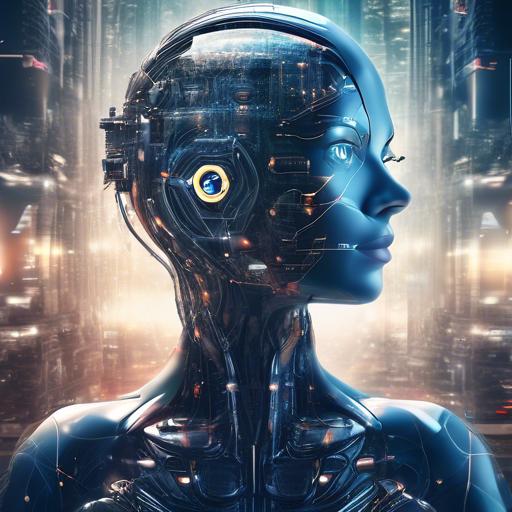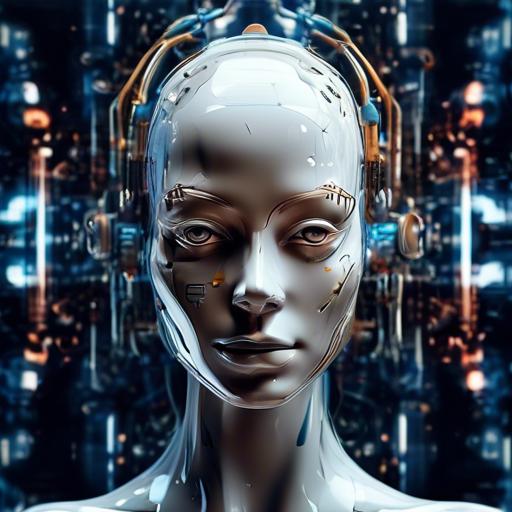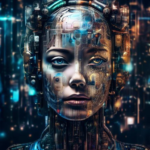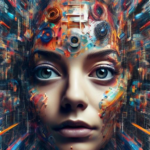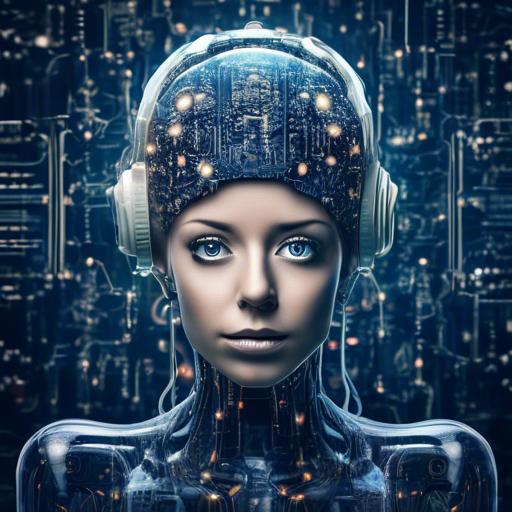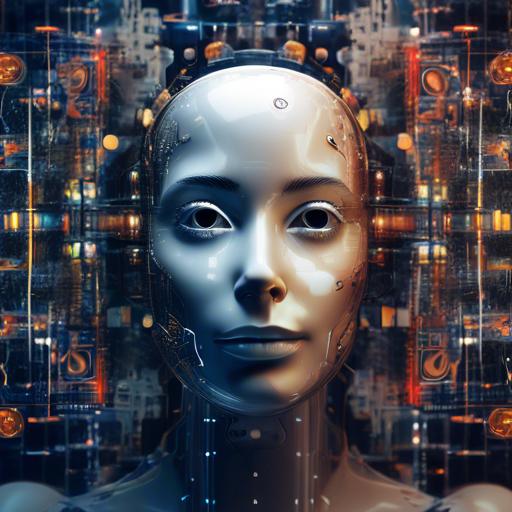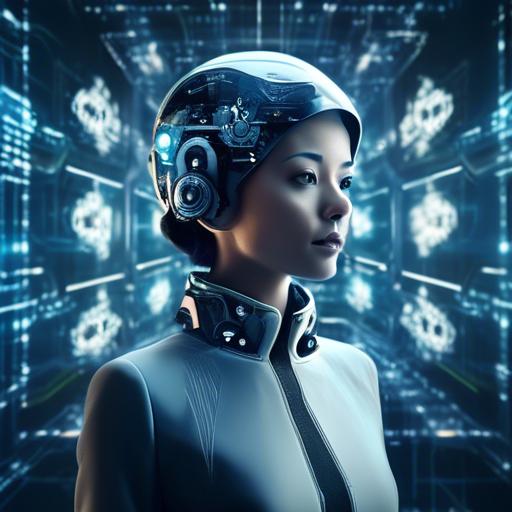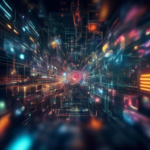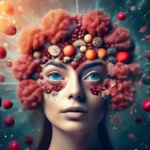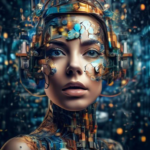Imagine walking into an art gallery where the canvases are alive, each stroke of the brush conjured not by human hands but by the mind of a machine. As surreal as it sounds, this is no longer the stuff of science fiction. Welcome to the world of AI image generation, where artificial intelligence infuses creativity into algorithms to produce captivating visuals. For beginners standing at the threshold of this brave new landscape, the journey can seem as nebulous as the images themselves. Fear not! This article is your companion, guiding you through the basics, demystifying the jargon, and igniting your curiosity. Ready to unlock the doors to this digital atelier? Let’s step inside and explore the magic of AI-powered artistry together.
Table of Contents
- Understanding AI and Its Role in Image Creation
- Diving into Popular AI Image Generation Tools
- Understanding DALL-E, Stable Diffusion, and More
- Crafting Your First AI-Generated Image: A Step-by-Step Guide
- Best Practices for Optimizing AI Image Outputs
- Ethical Considerations in AI Image Generation
- Unlocking Creative Potential with AI: Tips and Tricks
- Closing Remarks
Understanding AI and Its Role in Image Creation
Artificial Intelligence (AI) has revolutionized numerous fields, and image creation is no exception. Today’s AI image generation tools can create stunning visuals, often indistinguishable from those made by human artists. This technology leverages neural networks, deep learning, and vast datasets to understand and synthesize images, making the creative process more accessible and exciting.
A fundamental component of AI image generation is the Generative Adversarial Network (GAN). GANs consist of two neural networks: the **generator**, which creates images, and the **discriminator**, which evaluates them. These networks work in tandem, with the generator striving to produce images that can fool the discriminator, while the discriminator becomes increasingly adept at detecting fakes. The result is a powerful system capable of producing high-quality, realistic images.
Some benefits of AI in image creation include:
- Speed: AI can generate images rapidly, accelerating workflows.
- Cost-effectiveness: Reduces the need for expensive resources and extensive labor.
- Enhanced Creativity: The ability to iterate and experiment without limitations.
Moreover, AI-generated images have found applications in various industries, such as:
- Advertising: Creating eye-catching visual content for campaigns.
- Gaming: Designing intricate game environments and characters.
- Healthcare: Generating medical imagery for training and diagnostics.
| Feature | Traditional Creation | AI-Driven Creation |
|---|---|---|
| Time | Hours to days | Seconds to minutes |
| Cost | High | Low to moderate |
| Complexity | High | Moderate |
While AI-generated images offer numerous advantages, they also present ethical and societal challenges. Deepfakes, for instance, can be used to create convincing yet false representations, leading to misinformation. Thus, it’s crucial to deploy these technologies responsibly and ensure they are used for beneficial purposes.
Diving into Popular AI Image Generation Tools
Exploring the realm of AI image generation, you’ll discover several intriguing tools that make the creation of stunning visuals a breeze. Each tool has its unique features and strengths, catering to different needs and skill levels. Let’s dive into some of the most popular ones that are shaping the future of digital artistry.
DeepArt is a fantastic starting point. This tool uses neural networks to transform your photos into artworks inspired by famous artists. Imagine turning your vacation snapshots into pieces reminiscent of Van Gogh or Picasso! It’s simple: upload a photo, choose an art style, and let DeepArt do the magic. Here are some highlights:
- **User-friendly interface**
- **Variety of art styles**
- **Quick processing time**
Artbreeder, on the other hand, takes a more collaborative approach. It allows users to mix different images to create entirely new ones. This tool is perfect for those who love experimenting with multiple styles and features. With Artbreeder, you can customize every little detail, from facial features to landscape elements.
- **Collaborative creation**
- **Highly customizable**
- **Endless possibilities**
For those who are into photorealism, DALL-E by OpenAI is a game-changer. It can generate images from textual descriptions, expanding creative horizons like never before. Describe a “koala dunking a basketball,” and DALL-E will produce a compelling visual interpretation. This tool is powerful for both professional and recreational use.
- **Text-to-image generation**
- **Highly detailed outputs**
- **Creative freedom**
The following is a quick comparison to help you choose the right tool for your needs:
| Tool | Best For | Key Feature |
|---|---|---|
| DeepArt | Artistic transformations | Variety of styles |
| Artbreeder | Collaborative creations | Highly customizable |
| DALL-E | Text-to-image generation | Detailed outputs |
Each of these tools brings something unique to the table, allowing both novice and seasoned artists to push their creative boundaries. Whether you want to dabble in artistic stylization, mix and match images, or create visuals from text descriptions, there’s a tool out there for you.
Understanding DALL-E, Stable Diffusion, and More
Artificial Intelligence has been making waves in various fields, and image generation is one of the most exciting areas where it’s showing incredible promise. Tools like **DALL-E** and **Stable Diffusion** have opened doors to new creative processes, allowing for the generation of highly detailed and imaginative visual content from simple text prompts. But what exactly are these technologies, and how do they work?
DALL-E is developed by OpenAI and specializes in generating images from textual descriptions. Imagine typing “a cat wearing a space suit on the moon” and getting a surprisingly accurate and vivid image back! This software uses a special type of neural network called a transformer model, which understands and synthesizes information from natural language to create visuals.
- Highly detailed image generation
- Wide range of creative applications
- Easy to use with simple text prompts
Stable Diffusion, on the other hand, dives deeper into the mechanics of image creation. It relies on a process called “diffusion,” where noise is gradually added to training images and then removed in a way that retains important features while discarding random details. This allows for precise control over the image generation process, making it a powerful tool for fine-tuned artistic projects.
- Detailed and intricate imagery
- Effective for high-resolution outputs
- Combines artistic control with automation
| Feature | DALL-E | Stable Diffusion |
|---|---|---|
| Ease of Use | High | Medium |
| Image Detail | Medium | High |
| Creative Applications | Wide Range | Specific Projects |
Understanding these technologies can offer countless opportunities for both professional and amateur artists. By leveraging the different strengths of DALL-E and Stable Diffusion, you can create virtually any image you can imagine, whether it’s for commercial projects, educational content, or just personal fun. Embrace the future of image creation and unleash your creativity!
Crafting Your First AI-Generated Image: A Step-by-Step Guide
In the fascinating world of AI image generation, starting your own project can be both thrilling and daunting. Fear not, as this step-by-step guide will walk you through the process with clarity and enthusiasm. The first essential step is understanding the tools at your disposal. Popular options include *DALL-E*, *MidJourney*, and *Runway ML*, each offering unique capabilities. Focus on selecting a tool that aligns with your goals and skill level.
Once you’ve chosen your AI tool, the next phase is feeding it the right data. This typically involves providing a **training dataset** that the AI will use to learn and generate images. This dataset can be composed of artwork, photographs, or even computer-generated images. Here are a few tips to create an effective dataset:
- Ensure your images are high-quality and diverse.
- Organize them into categories or themes.
- Label each image accurately if required.
With your dataset ready, it’s time to train your AI model. This process will vary depending on the tool you’ve selected. Some platforms make this incredibly user-friendly, while others might require more technical know-how. Generally, you will upload your dataset and let the AI analyze it, adjusting parameters such as **learning rate** and **iteration count** for optimal results.
| Tool | Ease of Use | Best For |
|---|---|---|
| DALL-E | High | Creative Artworks |
| MidJourney | Medium | Abstract Images |
| Runway ML | Low | Multiple Use Cases |
After the model is trained, the magic begins. Using the platform’s interface, you can now start generating images based on prompts or parameters you define. This is where creativity and experimentation play key roles. It’s like opening a treasure chest of possibilities, and with each tweak, you unlock a new visual gem. Don’t hesitate to play around with settings such as **style**, **color**, and **composition**.
review and refine your creations. AI-generated images can sometimes be unpredictable, requiring a bit of fine-tuning. Save your favorites, and if needed, make adjustments to the dataset or model parameters to better capture your vision. And there you have it – your very own AI-generated masterpiece!
Best Practices for Optimizing AI Image Outputs
To achieve the best results with AI image generation, you must pay close attention to various optimization techniques that can significantly enhance the quality of your outputs. Here are some essential practices to consider:
- Data Quality: The cornerstone of any successful AI project is high-quality data. Ensure that the images you feed into the algorithm are crisp, clear, and well-labeled. Quality datasets help the AI model learn intricate details and patterns more effectively.
- Parameter Tuning: Each AI model has a set of hyperparameters that control its learning process. Experimenting with different values for these parameters can yield better image quality. Pay special attention to the learning rate, batch size, and the number of training epochs.
- Regular Updates: AI models can quickly become outdated. Regularly updating your model with new data and improvements in the algorithm can keep it performing at its peak. Schedule periodic reviews to ensure the model incorporates the latest technology and techniques.
Another vital aspect of optimization is understanding the balance between detail and computational efficiency. AI models can produce highly detailed images, but these often require significant computational resources. To strike a balance, experiment with different model sizes and architectures until you find the optimal configuration. Consider these pointers:
- Image Resolution: While higher resolutions can offer better details, they also demand more computing power and storage. Test various resolutions to find a sweet spot where quality meets efficiency.
- Compression Techniques: Use image compression algorithms to reduce file size without compromising much on the quality. Advanced algorithms like JPEG 2000 can be particularly effective.
- Cloud Services: Utilize cloud-based solutions that offer scalable computational power. Services like AWS, Google Cloud, and Azure provide tools specifically designed for AI, making it easier to manage large-scale computations.
| Best Practices | Benefits |
|---|---|
| Maintain High-Quality Data | Improves learning accuracy |
| Experiment with Hyperparameters | Optimizes performance |
| Regular Model Updates | Keeps technology current |
Lastly, do not underestimate the power of community feedback and collaboration. Joining forums and participating in online communities can provide you with insights and tips that you might not come across otherwise. Engage with other AI enthusiasts, share your challenges, and learn from their experiences. Being part of a collaborative ecosystem enriches your knowledge and helps you stay updated with the latest advancements.
Ethical Considerations in AI Image Generation
Creating images through artificial intelligence isn’t just a technological marvel; it’s a space that requires deep ethical introspection. The profound capabilities of AI in generating hyper-realistic images can spark significant concerns. Here, we’ll delve into some major ethical issues related to AI-driven image generation, while offering a supportive pathway for beginners to understand and navigate these concerns thoughtfully.
Privacy and Consent: One of the most pressing ethical issues is the matter of privacy and consent. When AI algorithms use publicly available images to train systems, the individuals in those images rarely provide explicit consent. This can lead to the misuse of personal photos and potential breaches of privacy. To tackle this, developers and users should:
- Use datasets that have proper licensing and consent agreements.
- Implement measures to anonymize images to protect individuals’ identities.
Misuse and Deepfakes: AI-generated images can be used for harmful purposes, such as creating deepfakes to spread misinformation or defame individuals. This not only damages trust but also poses a legal threat. Tackling this requires:
- Building and advocating for technologies that can detect AI-generated content.
- Supporting policies and regulations aimed at penalizing malicious use.
Bias and Fair Representation: AI systems are as good as the data they’re trained on. If the training data contains biases, the generated images can reinforce stereotypes or exclude certain groups. Ensuring fair representation involves:
- Using diverse image datasets to train AI systems.
- Regularly auditing AI models for any signs of bias.
| Ethical Concern | Mitigation Strategy |
|---|---|
| Privacy & Consent | Use licensed datasets, anonymize images |
| Misuse & Deepfakes | Detection technologies, support regulations |
| Bias & Representation | Diverse datasets, regular audits |
Technology and ethics should go hand-in-hand to ensure that the advancements in AI image generation primarily benefit society. By fostering an environment of accountability and conscientiousness, beginners and experts alike can be positive forces in this burgeoning field. As we navigate through these ethical challenges, let’s pave the way for responsible and inclusive innovation.
Unlocking Creative Potential with AI: Tips and Tricks
Delving into the world of AI image generation opens up an abundance of **creative opportunities**. Leveraging artificial intelligence allows both seasoned artists and novices to experiment beyond traditional techniques. Here are some tried-and-true tips and tricks you can apply to make the most out of AI-generated images.
One of the foremost tools to acquaint yourself with is **Generative Adversarial Networks (GANs)**. These networks consist of two parts: the generator and the discriminator. The generator crafts new images, while the discriminator evaluates them for authenticity, ensuring a constant improvement loop. By adjusting parameters such as **learning rates** and **noise inputs**, you can tailor the output to match your artistic vision.
**Prompts and Customizations** are another key element. For instance, tools like DALL-E and MidJourney use text prompts to generate images. A well-crafted prompt can significantly enhance the quality of the output:
- Be **specific** about the elements you want.
- Use **descriptive adjectives** to define textures, colors, and styles.
- Combine **keywords** to achieve a unique blend.
Effective use of **post-processing** software can further elevate your AI-generated images. Programs like Adobe Photoshop or GIMP can help refine the output by adding touches that AI might miss. Focus on:
- **Color correction** to achieve the desired palette.
- Adding **layers** for depth and complexity.
- Incorporating **filters** to match your theme.
| Tool | Best For | Unique Feature |
|---|---|---|
| Generative Adversarial Networks (GANs) | Fine-tuning image generation | Constant improvement loop |
| DALL-E | Text-to-image tasks | Detailed prompts |
| Photoshop | Image refinement | Extensive layering |
As you experiment more, you will discover the **potential and limitations** of different AI tools. Don’t hesitate to **mash-up various techniques** and tools to create something uniquely yours. Embrace the endless possibilities that AI image generation has to offer and watch as it transforms your creative process.
Closing Remarks
As we conclude our overview of AI image generation for beginners, remember that the world of artificial intelligence is constantly evolving and offering new possibilities. With the right tools and guidance, you too can explore the exciting realm of AI image generation and unleash your creativity. Don’t be afraid to experiment, learn from your mistakes, and most importantly, have fun along the way. Embrace the limitless potential of AI and let your imagination run wild. Who knows what amazing images you may create next? The possibilities are endless. Happy creating!

